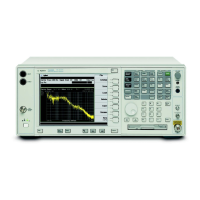296 Chapter 5
Concepts
Analog Modulation Concepts
microphonics. The residual AM and FM specifications quantify the residual
modulation internal to the Measuring Receiver.
Residual modulation affects the modulation readings in a manner which depends
on the detector used, the nature of the residuals, and the signal-to-noise ratio. If the
residual is predominately noise, when the peak detector is used, the residuals add
in a way that is statistically related to the signal-to-noise ratio. When the average
detector is used, the residuals add approximately in an rms manner, that is, the
square root of the sum of the squares of the noise and the signal. The effect of this
noise becomes insignificant, however, when the signal-to-noise ratio is above a
few dB. Noise can be further reduced by filtering the demodulated signal.
In FM broadcasting and communications, the signal-to-noise ratio is improved by
giving the baseband signal a high-frequency boost before applying it to the
modulator. This is called pre-emphasis. The boost is a simple 6 dB per octave with
the 3 dB corner specified by a time constant; for example, 75 μs (which
corresponds to a 3 dB corner of 2.12 kHz) is used for commercial broadcast FM. If
desired, the demodulated FM can be de-emphasized to equalize the signal at the
modulation output and at the display.
